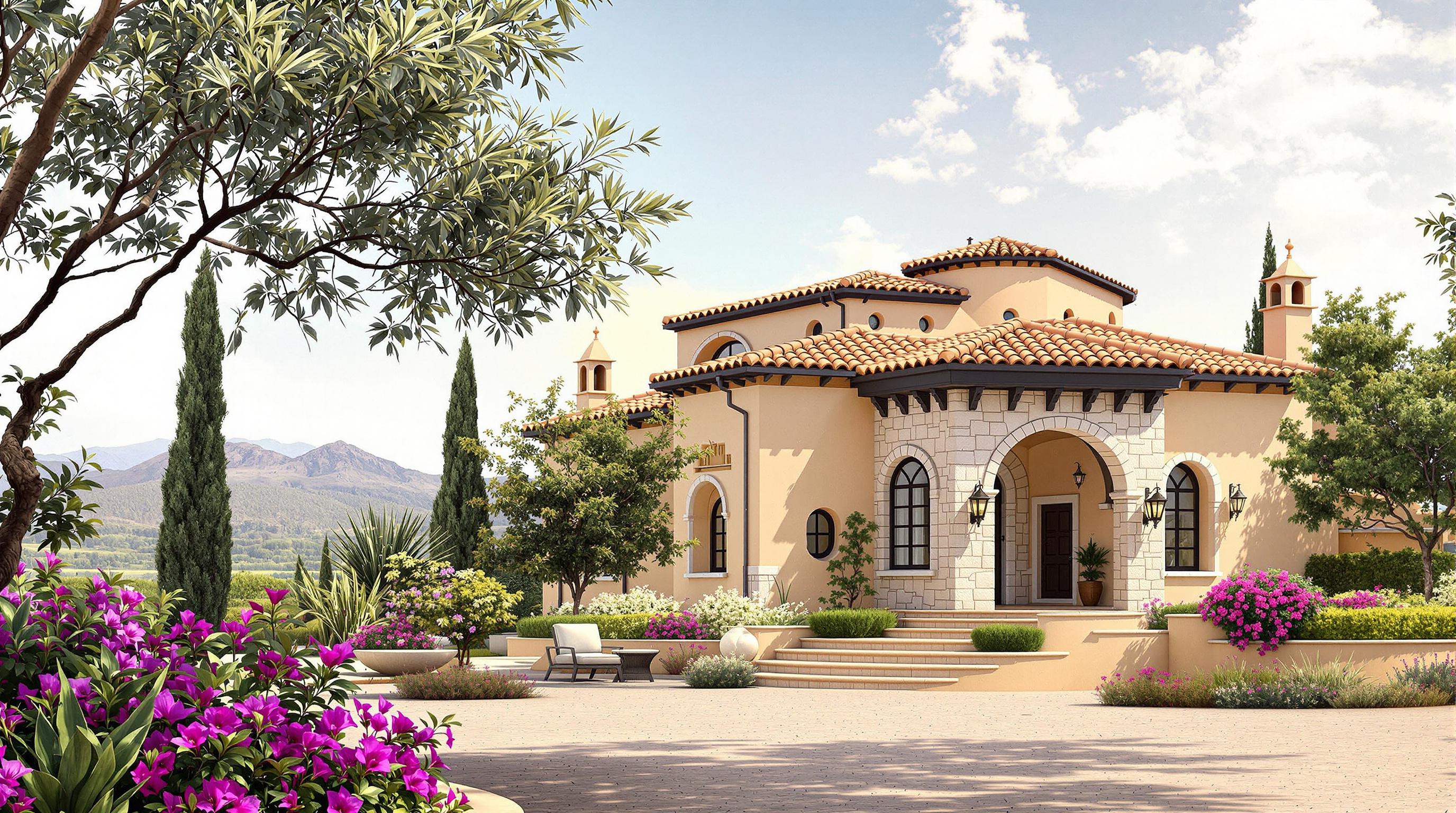Pagodas are more than just architectural wonders - they represent the balance of nature and the spiritual journey. Each tier of a pagoda symbolizes one of the five elements: Earth, Water, Fire, Air, and Space, reflecting Buddhist teachings on impermanence and interconnectedness. Here's a quick breakdown:
- Earth: The solid base provides stability and strength.
- Water: Flowing rooflines and curves signify transformation.
- Fire: Ascending tiers represent spiritual growth.
- Air: Open spaces symbolize breath and freedom.
- Space: The spire connects Earth to the heavens, representing enlightenment.
From Japan's five-story pagodas to China's Feng Shui-inspired designs, regional variations add unique interpretations. Modern tools like 3D scanning are now preserving these sacred structures, ensuring their symbolism endures for future generations.
The 5 Elements in Pagoda Design
Earth: The Base and Foundation
In pagoda architecture, Earth stands for stability and strength, often represented by the massive stone platforms and square bases that form the foundation. Take, for example, the Fogong Pagoda, built in 1056, or the Great Stupa at Sanchi, dating back to the 3rd century B.C.. These structures showcase how a solid, enduring base anchors the dynamic and intricate designs that rise above it.
Water: Flowing Curves
The element of water comes to life in pagoda design through flowing rooflines and curved eaves. Blue tiles often enhance this connection to water. A stunning example of this can be seen in Casey Key, Florida, where a Chinese water garden features an 85-foot koi pond with cascading waterfalls and a 60-foot refugium pond surrounding a Chinese pagoda. These fluid, graceful elements serve as a natural progression toward the higher tiers, symbolizing transformation.
Fire: Ascending Tiers
The rising tiers of a pagoda are a powerful representation of fire, symbolizing transformation and spiritual ascent. The gojunoto (five-story pagoda) at Toji Temple in Kyoto is a perfect example of this concept. Each tier represents a step toward enlightenment, capturing the transformative essence of fire.
Air: Breathing Spaces
Air is woven into pagoda design through open spaces and carefully placed perforations, which allow for natural ventilation while symbolizing the breath of life and spiritual freedom. In Japanese five-story pagodas, one of the levels is specifically dedicated to representing air or wind. This thoughtful design element emphasizes the importance of flow and openness in both the physical and spiritual realms.
Space: The Celestial Spire
At the very top of a pagoda, the spire represents space, or the void, symbolizing the connection between Earth and the heavens. This design reflects the Buddhist concept of emptiness and the ultimate stage of spiritual liberation. The gojunoto at Horyuji, completed around 711 AD, is one of the world’s oldest wooden buildings. Its top spire embodies the void element, standing as a testament to the Buddhist journey toward enlightenment.
What Are The Unique Architectural Features Of A Five-story Pagoda? - Japan Past and Present
Regional Differences in Element Symbolism
While the core ideas of elemental symbolism remain universal, different regions interpret these concepts through distinct cultural and philosophical lenses.
Japanese Buddhist Designs
In Japan, the design of pagodas reflects a unique interpretation of elemental symbolism through a five-tiered structure. Each tier corresponds to one of the elements - earth, water, fire, wind, and void (or space) - representing a spiritual ascent toward enlightenment. At the top of these pagodas sits a bronze Sorin finial, symbolizing the culmination of these elements. A well-known example is the five-storied pagoda at Toji Temple in Kyoto, which exemplifies this layered approach to design. By contrast, Chinese designs prioritize harmony across the entire site using Feng Shui principles.
Chinese Feng Shui Principles
In China, pagodas embrace elemental symbolism through the lens of Feng Shui, focusing on the harmonious flow of energy, or Qi. The five elements - wood, fire, earth, metal, and water - are incorporated into both the structure’s design and its placement within the environment. These buildings are often aligned with natural features and cardinal directions to enhance balance and energy flow. A 2023 study published in the Journal of Chinese Architecture revealed that 85% of historic Chinese sites adhere to Feng Shui principles.
To better understand the differences between these two approaches, consider the following comparison:
| Aspect | Japanese Design | Chinese Design |
|---|---|---|
| Elements | Earth, Water, Fire, Wind, Void | Wood, Fire, Earth, Metal, Water |
| Symbolism | Vertical progression through tiers | Energy flow and directional balance |
| Design Focus | Individual tier representation | Overall site harmony and placement |
| Primary Influence | Buddhist godai concept | Feng Shui principles |
These traditional philosophies continue to shape modern architecture. For instance, during the construction of the Tokyo Skytree, critics raised concerns about its potential negative impact on Feng Shui. In response, the architects described the tower as a modern five-element pagoda, designed to safeguard Tokyo’s prosperity for generations.
sbb-itb-1be9014
Modern Documentation Methods
Digital tools have revolutionized the way pagodas are documented, capturing their intricate details with precision and paving the way for more accurate restoration efforts.
3D Scanning Techniques
Laser scanning technology has made it possible to document pagodas with astounding precision, achieving an accuracy of up to 0.025 mm. This level of detail reveals even the subtlest representations of the five elements - earth, water, fire, air, and space - embedded in their architecture.
A notable example is the Wat Krachee pagoda in Ayutthaya, where UNESCO Bangkok collaborated with the Fine Arts Department from February 2018 to July 2019. This project used advanced scanning methods to uncover the elemental symbolism layered across the pagoda's tiers.
Combining different scanning methods offers a more complete picture of these structures:
- Terrestrial Laser Scanning: Ideal for capturing precise geometry at ground level.
- UAV Photogrammetry: Provides excellent coverage of upper zones, such as roofs and spires.
- LiDAR: Useful for mapping large-scale sites and understanding their environmental context.
Studies show that these digital techniques can reduce restoration errors by as much as 30% compared to older methods. By integrating these approaches, researchers can produce highly detailed and accurate documentation for future analysis.
Digital Analysis Tools
Once scanning data is collected, digital platforms take over to analyze and catalog the symbolic features of pagoda designs. For instance, Architecture Helper uses image analysis to identify design elements that reflect the five elements, enabling deeper comparisons across different architectural styles and enriching educational materials.
CyArk’s 2011 project at Angkor Wat is a prime example of this integration. By combining laser scanning, photogrammetry, and 3D modeling, they created a comprehensive digital archive to study the temple's architectural symbolism.
Emerging trends now focus on using metaverse technologies for heritage preservation. These tools promise enhanced interactivity and secure data storage, ensuring that the symbolic design of pagodas remains accessible for study and preservation well into the future.
Conclusion
Pagodas serve as enduring symbols of the harmony between design and deeper meaning. Their architecture weaves together the five elements - earth, water, fire, air, and space - creating a connection between the natural world and the spiritual journey. This design not only reflects Buddhist cosmology but also highlights how architecture can seamlessly unite purpose and belief.
These sacred structures act as bridges between the earthly and the divine, showcasing centuries of architectural wisdom. As Buddha Groove eloquently puts it:
Each level of a pagoda ascends towards enlightenment, mirroring the spiritual journey of its visitors - from earthly concerns to a pinnacle of spiritual awakening.
Through preservation and exploration, we see how practical design and profound spiritual significance coexist, ensuring the timeless legacy of the five elements continues to inspire.
FAQs
Why do pagodas represent the elements of Earth, Water, Fire, Air, and Space?
Pagodas hold profound symbolic meaning, embodying the five natural elements: Earth, Water, Fire, Air, and Space, as rooted in Buddhist philosophy. In a traditional five-story pagoda, each tier corresponds to one of these elements, starting with Earth at the foundation and culminating with Space at the top. This layered structure reflects the connection between the physical world and the spiritual universe.
Beyond their elemental symbolism, the pagoda’s design represents the journey toward enlightenment. Each level signifies a step toward achieving higher consciousness, making the structure a metaphor for spiritual growth. By blending these elements into their architecture, pagodas stand as enduring symbols of harmony, unity, and the quest for a deeper understanding of existence.
How do Japanese and Chinese pagodas differ in their symbolism and design?
Japanese and Chinese pagodas stand as striking symbols of their respective cultures, each showcasing unique philosophies and architectural styles.
In Japan, pagodas - particularly the five-tiered gojunoto - carry deep symbolic meaning. Each tier represents one of the five natural elements: earth, water, fire, wind, and space. Together, these layers reflect a profound sense of harmony between humanity and the universe. The architecture leans toward simplicity, focusing on balance and a spiritual connection to nature.
Chinese pagodas, by contrast, are closely linked to Buddhism and signify the journey toward enlightenment. Their designs often feature intricate carvings, elaborate eaves, and a sense of grandeur, blending influences from Confucianism and Daoism. Each tier of a Chinese pagoda symbolizes a step on the spiritual path, with the entire structure embodying unity and spiritual aspiration.
Though both types of pagodas share spiritual roots, their distinct designs and meanings highlight the differing cultural and philosophical traditions of Japan and China.
How is 3D scanning technology helping to preserve the cultural and symbolic designs of pagodas?
Modern 3D scanning technology has become essential in preserving the detailed craftsmanship and historical importance of pagodas. By generating precise digital models, it meticulously captures even the tiniest architectural features while documenting the current state of these ancient structures.
These digital replicas serve as a critical resource for restoration efforts, helping experts identify structural vulnerabilities and plan targeted conservation measures. Beyond structural preservation, 3D scanning ensures that the artistic and symbolic aspects of pagodas are carefully recorded, protecting their legacy and cultural heritage for generations to come.


